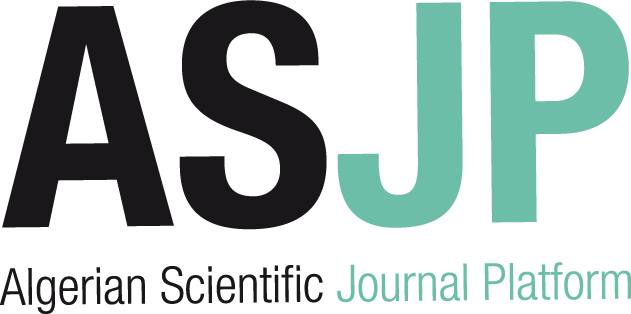Détail de l'auteur
Auteur N. Warnken |
Documents disponibles écrits par cet auteur (2)


 Ajouter le résultat dans votre panier Faire une suggestion Affiner la recherche
Ajouter le résultat dans votre panier Faire une suggestion Affiner la rechercheAtom probe tomography analysis of the distribution of rhenium in nickel alloys / A. Mottura in Acta materialia, Vol. 58 N° 3 (Fevrier 2010)

Titre : Atom probe tomography analysis of the distribution of rhenium in nickel alloys Type de document : texte imprimé Auteurs : A. Mottura, Auteur ; N. Warnken, Auteur ; M. K. Miller, Auteur Article en page(s) : pp. 931-942 Note générale : Métallurgie Langues : Anglais (eng) Mots-clés : Nickel alloys Atom probe tomography Rhenium-effect Index. décimale : 669 Métallurgie Résumé : Atom probe tomography (APT) is used to characterise the distributions of rhenium in a binary Ni–Re alloy and the nickel-based single-crystal CMSX-4 superalloy.
A purpose-built algorithm is developed to quantify the size distribution of solute clusters, and applied to the APT datasets to critique the hypothesis that rhenium is prone to the formation of clusters in these systems.
No evidence is found to indicate that rhenium forms solute clusters above the level expected from random fluctuations.
In CMSX-4, enrichment of Re is detected in the matrix phase close to the matrix/precipitate (γ/γ′) phase boundaries.
Phase field modelling indicates that this is due to the migration of the γ/γ′ interface during cooling from the temperature of operation.
Thus, neither clustering of rhenium nor interface enrichments can be the cause of the enhancement in high temperature mechanical properties conferred by rhenium alloying.DEWEY : 669 ISSN : 1359-6454 En ligne : http://www.sciencedirect.com/science?_ob=PublicationURL&_tockey=%23TOC%235556%23 [...]
in Acta materialia > Vol. 58 N° 3 (Fevrier 2010) . - pp. 931-942[article] Atom probe tomography analysis of the distribution of rhenium in nickel alloys [texte imprimé] / A. Mottura, Auteur ; N. Warnken, Auteur ; M. K. Miller, Auteur . - pp. 931-942.
Métallurgie
Langues : Anglais (eng)
in Acta materialia > Vol. 58 N° 3 (Fevrier 2010) . - pp. 931-942
Mots-clés : Nickel alloys Atom probe tomography Rhenium-effect Index. décimale : 669 Métallurgie Résumé : Atom probe tomography (APT) is used to characterise the distributions of rhenium in a binary Ni–Re alloy and the nickel-based single-crystal CMSX-4 superalloy.
A purpose-built algorithm is developed to quantify the size distribution of solute clusters, and applied to the APT datasets to critique the hypothesis that rhenium is prone to the formation of clusters in these systems.
No evidence is found to indicate that rhenium forms solute clusters above the level expected from random fluctuations.
In CMSX-4, enrichment of Re is detected in the matrix phase close to the matrix/precipitate (γ/γ′) phase boundaries.
Phase field modelling indicates that this is due to the migration of the γ/γ′ interface during cooling from the temperature of operation.
Thus, neither clustering of rhenium nor interface enrichments can be the cause of the enhancement in high temperature mechanical properties conferred by rhenium alloying.DEWEY : 669 ISSN : 1359-6454 En ligne : http://www.sciencedirect.com/science?_ob=PublicationURL&_tockey=%23TOC%235556%23 [...] Exemplaires
Code-barres Cote Support Localisation Section Disponibilité aucun exemplaire Atom probe tomography analysis of the distribution of rhenium in nickel alloys / A. Mottura in Acta materialia, Vol. 58 N° 3 (Fevrier 2010)

Titre : Atom probe tomography analysis of the distribution of rhenium in nickel alloys Type de document : texte imprimé Auteurs : A. Mottura, Auteur ; N. Warnken, Auteur ; M. K. Miller, Auteur Année de publication : 2011 Article en page(s) : pp. 931–942 Note générale : Métallurgie Langues : Anglais (eng) Mots-clés : Nickel alloys Atom probe tomography Rhenium-effect Résumé : Atom probe tomography (APT) is used to characterise the distributions of rhenium in a binary Ni–Re alloy and the nickel-based single-crystal CMSX-4 superalloy. A purpose-built algorithm is developed to quantify the size distribution of solute clusters, and applied to the APT datasets to critique the hypothesis that rhenium is prone to the formation of clusters in these systems. No evidence is found to indicate that rhenium forms solute clusters above the level expected from random fluctuations. In CMSX-4, enrichment of Re is detected in the matrix phase close to the matrix/precipitate (γ/γ′) phase boundaries. Phase field modelling indicates that this is due to the migration of the γ/γ′ interface during cooling from the temperature of operation. Thus, neither clustering of rhenium nor interface enrichments can be the cause of the enhancement in high temperature mechanical properties conferred by rhenium alloying. DEWEY : 669 ISSN : 1359-6454 En ligne : http://www.sciencedirect.com/science/article/pii/S1359645409006879
in Acta materialia > Vol. 58 N° 3 (Fevrier 2010) . - pp. 931–942[article] Atom probe tomography analysis of the distribution of rhenium in nickel alloys [texte imprimé] / A. Mottura, Auteur ; N. Warnken, Auteur ; M. K. Miller, Auteur . - 2011 . - pp. 931–942.
Métallurgie
Langues : Anglais (eng)
in Acta materialia > Vol. 58 N° 3 (Fevrier 2010) . - pp. 931–942
Mots-clés : Nickel alloys Atom probe tomography Rhenium-effect Résumé : Atom probe tomography (APT) is used to characterise the distributions of rhenium in a binary Ni–Re alloy and the nickel-based single-crystal CMSX-4 superalloy. A purpose-built algorithm is developed to quantify the size distribution of solute clusters, and applied to the APT datasets to critique the hypothesis that rhenium is prone to the formation of clusters in these systems. No evidence is found to indicate that rhenium forms solute clusters above the level expected from random fluctuations. In CMSX-4, enrichment of Re is detected in the matrix phase close to the matrix/precipitate (γ/γ′) phase boundaries. Phase field modelling indicates that this is due to the migration of the γ/γ′ interface during cooling from the temperature of operation. Thus, neither clustering of rhenium nor interface enrichments can be the cause of the enhancement in high temperature mechanical properties conferred by rhenium alloying. DEWEY : 669 ISSN : 1359-6454 En ligne : http://www.sciencedirect.com/science/article/pii/S1359645409006879 Exemplaires
Code-barres Cote Support Localisation Section Disponibilité aucun exemplaire










